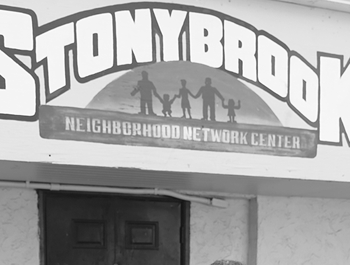Image

Patrick McNamara, CEO
Jaime Joshi, Communications Coordinator
Housing Partnership, Inc.
Challenge: Community development practitioners often wrestle with complexity and look for solutions rooted in their practice habits and noble intentions. Sometimes this can lead to programmatic silos which actually impede their work. How can organizations break through these silos to make a lasting impact in their communities?
Housing Partnership Inc. (HPI) helps families living in areas of concentrated poverty and risk. They believe that every family in their community should have the tools to overcome adversity and live a healthy, stable and rewarding life.
Through a strategic planning process, HPI recognized that their programmatic silos were impeding their work. They needed to find a better way to change the odds for the people they serve. Enter the "pocket strategy."
HPI formed cross-program "Pocket Teams" and a "Design Team" to focus on two neighborhoods ripe for change. The teams used a "design-and-do" approach ‒ experimenting, collecting data, learning and taking action. They met monthly to reflect on success and failures, highlight lessons learned and plan next steps.
One of the teams focused on Stonybrook Apartments, a property with many young families using Section 8 housing vouchers. The apartments are located in Riviera Beach, FL, which has a Neighborhood Scout crime rate of four on a scale where100 represents the safest area. With a history of violent and drug-related crimes, Stonybrook earned a tough reputation in the community.
For years, nonprofits and churches offered prefabricated solutions, none of which yielded lasting positive results. HPI's interactions with the complex were mostly via social services responding to child welfare calls for abuse or neglect.
 The pocket team's initial goal was to reduce child abuse rates by engaging residents, providing financial and parenting workshops and increasing access to services. Cleveland Wester, director of Targeted Case Management and Jibby Ciric, director of Client Outreach Services, led the team in a "boots on the ground" approach, starting with a resident survey conducted by knocking on every door. The residents got to know the staff and began opening up.
The pocket team's initial goal was to reduce child abuse rates by engaging residents, providing financial and parenting workshops and increasing access to services. Cleveland Wester, director of Targeted Case Management and Jibby Ciric, director of Client Outreach Services, led the team in a "boots on the ground" approach, starting with a resident survey conducted by knocking on every door. The residents got to know the staff and began opening up.However, the next step was more of a stumble. Workshops and meetings were poorly attended and frustration started to mount internally and between residents and HPI's team. Continuing the conversation, they realized that reducing child abuse rates was the organization's primary objective, not the residents'. HPI's prefabricated solutions weren't working.
Residents said that safety was their top concern, which is what Patrick McNamara, HPI's CEO, heard a decade earlier when he was providing services at Stoneybrook.
"We need to honor their voice and make this our top concern too," said McNamara. "Treat this like you're untying a knot. What has contributed to the 'knot' of unsafe conditions? How has it been tied? What's the relationship between stakeholders - property management, police, the city, and residents? Can we find a way to help residents 'pull the string'?"
The police were a regular presence within Stonybrook and property management had been taken to task on several occasions, both by police and HUD. HPI realized that every stakeholder was involved except the residents. To create a safer environment, HPI needed to harness and amplify the residents' voices.
As a public subsidy property, residents have the right to form an association. HPI helped them create one, enabling them to come to the table alongside property management and the police to voice their concerns.
The first meeting had five residents; the next had 12. At the last meeting in February 2016, almost 15 percent of all the residents showed up, resulting in positive feedback from police and management about the level of resident engagement.
Through resident participation, HPI created a rich learning experience for their staff, transforming them from therapists, case managers and housing specialists to community builders. Cross-program, indeed.
After several months, police calls from the complex had dropped by a staggering 80 percent. Residents began signing up for parenting, family counseling and financial coaching services. Five more residents found jobs. Child welfare calls started slowly decreasing. One resident just became a new homeowner.
HPI continues to assist residents in building their capacity to run the association, brokering relations with property management and police. The association's new goal is to be autonomous by the end of 2016.
HPI learned that Stonybrook wasn't a problem to be solved; instead, they joined with residents as problem solvers.
From this project HPI also learned that inclusive resident participation is the crux of building safe and sustainable communities and that stepping outside of their preconceived solutions and habits enabled them to see the problem from a different angle. HPI understands that they need to engage in situational social work even as they have a game plan and focus on results. They've added the capacity to engage, reflect and adapt, while remaining determined to promote family resilience and decrease child abuse in the area.

